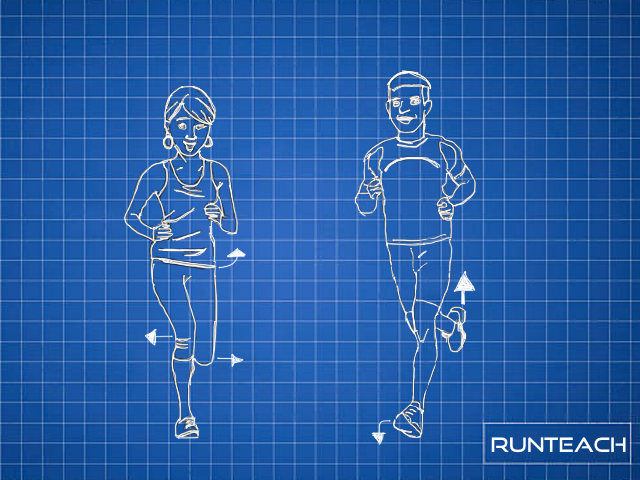Legs and Heels
This post relates to my Blueprint for running, which is free to download here – from my other site, The Confident Runner.
After last week’s email you may think there’s not much point in continuing with the self-assessment until you’ve got your hips sorted. And to some degree this is right.
(If you haven’t taken advantage of the special £10 discount off the hip course, you can do so here.)
But I still think it’s important for you to have an awareness of how the rest of you is moving when you are running, partly because it demonstrates just how important the hips and pelvis are in improving technique.
OK, let’s look at the LEGS / CYCLE section of the self-assessment checklist.
You’ll notice the first row is for Heel Lift. This is one of my four main markers of efficient form and it’s also an area I see most runners having difficulty to achieve.
What you are looking for is heels that lift up at toe off, and gracefully cycle high up above the level of your knees – even at slower speed. You want to achieve this because it takes less energy to swing a short lever (i.e. your leg in that lifted and bent position) than it does a long lever (your leg with only a fractional amount of clearance between your feet and the ground).
It gets even better from an energy perspective because you will be utilising more elastic return from the connective tissue of your feet and the back of your legs. This can make you up to 33% more efficient. Think about it as your own built in carbon plate.
And as a huge bonus, being able to cycle your heels up in an efficient manner pretty much takes care of the next row on the self-assessment sheet, overstride. And it can make Midfoot Landing much easier as well.
So you are looking at whether your heels come up above the level of your knees when you run, or do they just about lift off the ground?
Barely lifting off the ground is called a scissor gait, and is ultimately energy sapping. You are largely using muscular power with every stride rather than the elastic return of your connective tissue. This can be very tiring and can put undue repetitive stress on your legs and lower limbs.
There are lots of great exercises and drills to help you achieve more efficient heel lift, including low-level plyometrics such as jumping rope.
Ultimately though, if your hips and pelvis don’t have the required mobility and strength, higher cycling heels is going to be difficult to learn and maintain. I experienced this the hard way from my workshops where I teach motor control drills specifically for higher cycling heels. Everyone could do it on the day, but when I saw them running a week or two later, they had gone back to how they were before.
After a lot of research and a significant financial and time investment in my certifications and experimentations, I now know it’s largely down to not being able to move and control your hips. Yep, we’re back to that again, but it’s SO IMPORTANT!
So if you haven’t started to work on your hips, whether it’s my course or something totally different, please make a start. The time invested now will make your running much, much easier in the future.
Next time we’ll look at Overstride and Midfoot Landing, and how you can assess where you are with those.
Unleash your hips is my online course designed to help you get those flying feet through better hip and pelvis mobility and improved running technique. Click Here to find out more.


